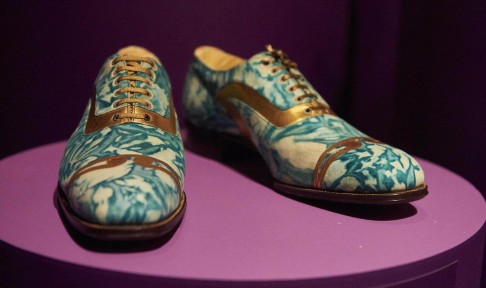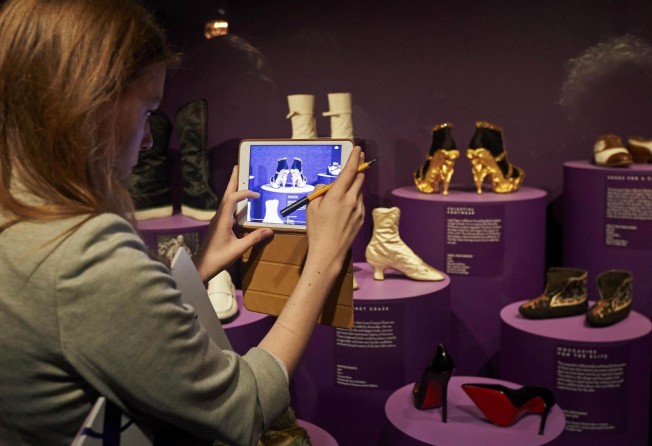
From bound feet to Blahniks, a shoe celebration at London's V&A museum
The 250 exhibits underscore how fashionable shoes have always been more than footwear

For centuries, women and sometimes men have squeezed their feet into tiny shoes or balanced on towering heels to feel sexy or empowered, and to show their wealth and status.
Now their sacrifice is being celebrated in an exhibition, "Shoes: Pleasure and Pain", which recently opened at the Victoria & Albert Museum in London.
From a 2,000-year-old pair of Egyptian gold sandals to child-size Chinese slippers for bound feet, to Christian Louboutin's red-soled stilettoes, the 250 exhibits underscore how fashionable shoes have always been more than footwear.
"The exhibition is about the obsession of shoes. It's looking at the power of shoes, how they can tell about status and privilege," says curator Helen Persson.
Luxury shoes have long been the preserve of the rich. Regardless of the cost, high heels, sumptuous fabrics and delicate designs have no place in the field or factory, or indeed in running for a bus.
Where women today fancy creations by Manolo Blahnik or Jimmy Choo, 19th-century Egyptians had 28.5cm wooden bath clogs, and 17th-century Venetian ladies had to balance on their maids to walk in towering "chopine" platforms.
Advances in engineering have made shoes more comfortable, but also higher and more outlandish, as exemplified by Noritaka Tatehana's gravity-defying heel-less shoes.

"Even though they seem so extreme and unwearable, they were designed to be worn," says Persson of the exhibits, which are taken from the V&A's archives as well as loans from other museums and private collectors.
"It's intriguing. We accept that shoes are pleasure, but also have a bit of pain. And we seem to have accepted that for 2,000 years."
The exhibition starts with the most iconic shoe of all: Cinderella's slipper. Made by Swarovski for the recent Disney movie, it is a testament to the power of footwear to change the wearer's life.
Alongside it is a shoe owned by former England soccer captain David Beckham, a working-class boy turned global star, personalised with the name of his son Brooklyn.
Shoes are also about fantasy. One section of the exhibition is dedicated to their role in seduction, from fluffy, kick-off mules to black leather lace-ups worn during the "porn-chic" trend in London in the 1890s.
Many of the exhibits were worn by celebrities, from Queen Victoria to Marilyn Monroe, or made by top designers, emphasising the role of shoes as an aspirational item.
There are Alexander McQueen's golden "angel wing" heels worn by Lady Gaga, Vivienne Westwood's blue platforms from which Naomi Campbell fell onto a Paris catwalk, and a version of the Duchess of Cambridge's nude courts.
"The shoes here are saying: 'I am important. I belong to the highest societies. I have no concern for the normality of life,'" Persson says.
There are shoes embellished with fur, feathers, gold plate and lavish embroidery, epitomising how footwear is often seen as "jewels for the feet". One 19th-century pair from India has a ruby, diamond, emerald and sapphire trim.
So, where's the pain part mentioned in the exhibition's title? Absent. Instead, it offers a sumptuous display of craftsmanship and an insight into a passion shared by the curator.
"I do love the way they make me feel," says Persson, who was wearing a pair of red heels. "Putting on a pair of high-heeled shoes, I do feel more confident. My body changes; I do like that. Although I do really like it when I take them off as well."
Agence France-Presse